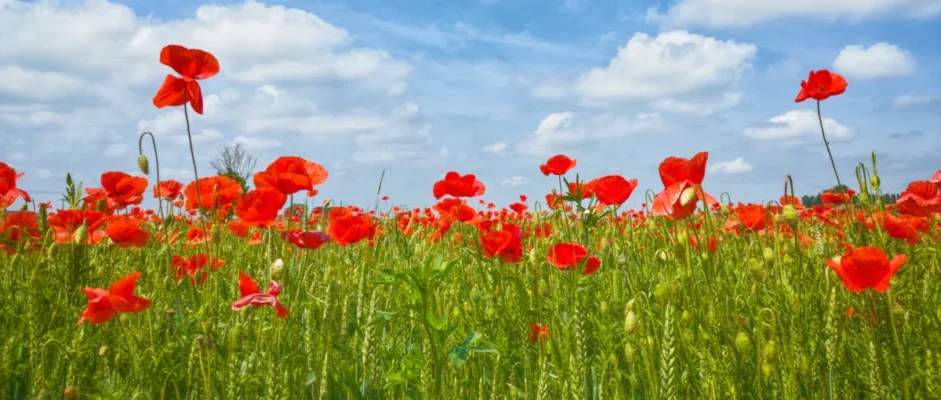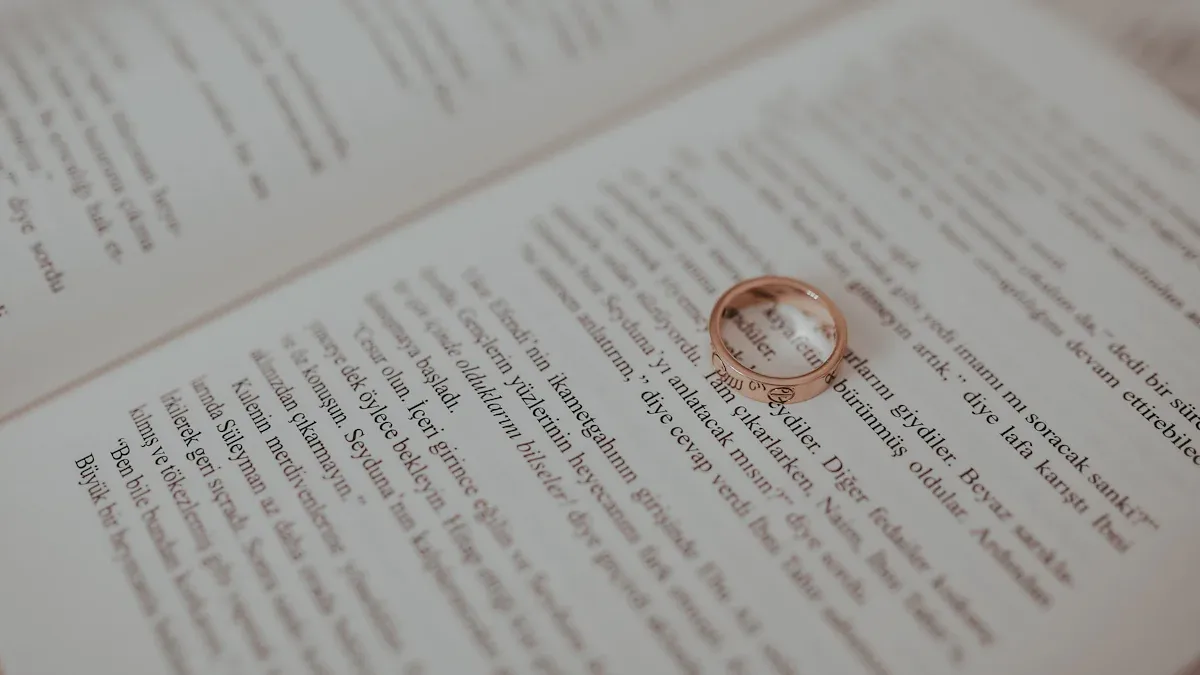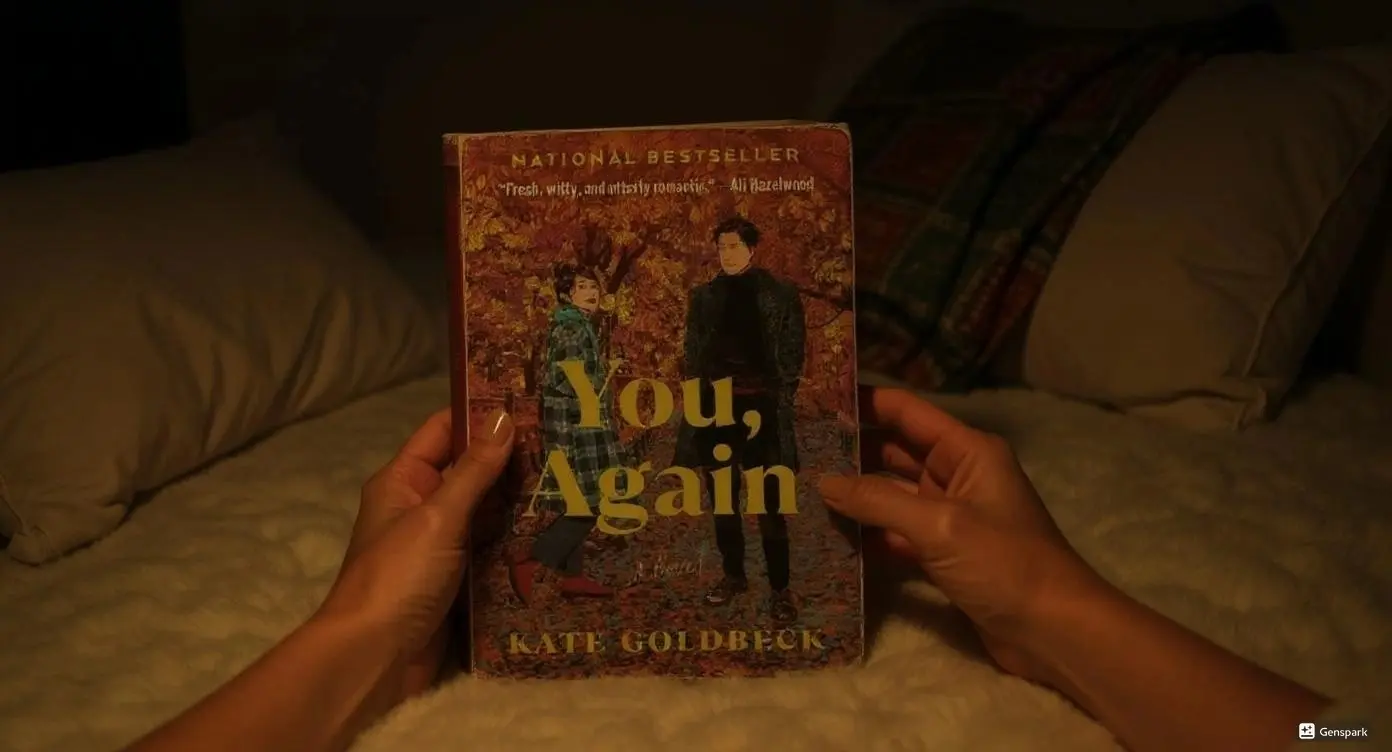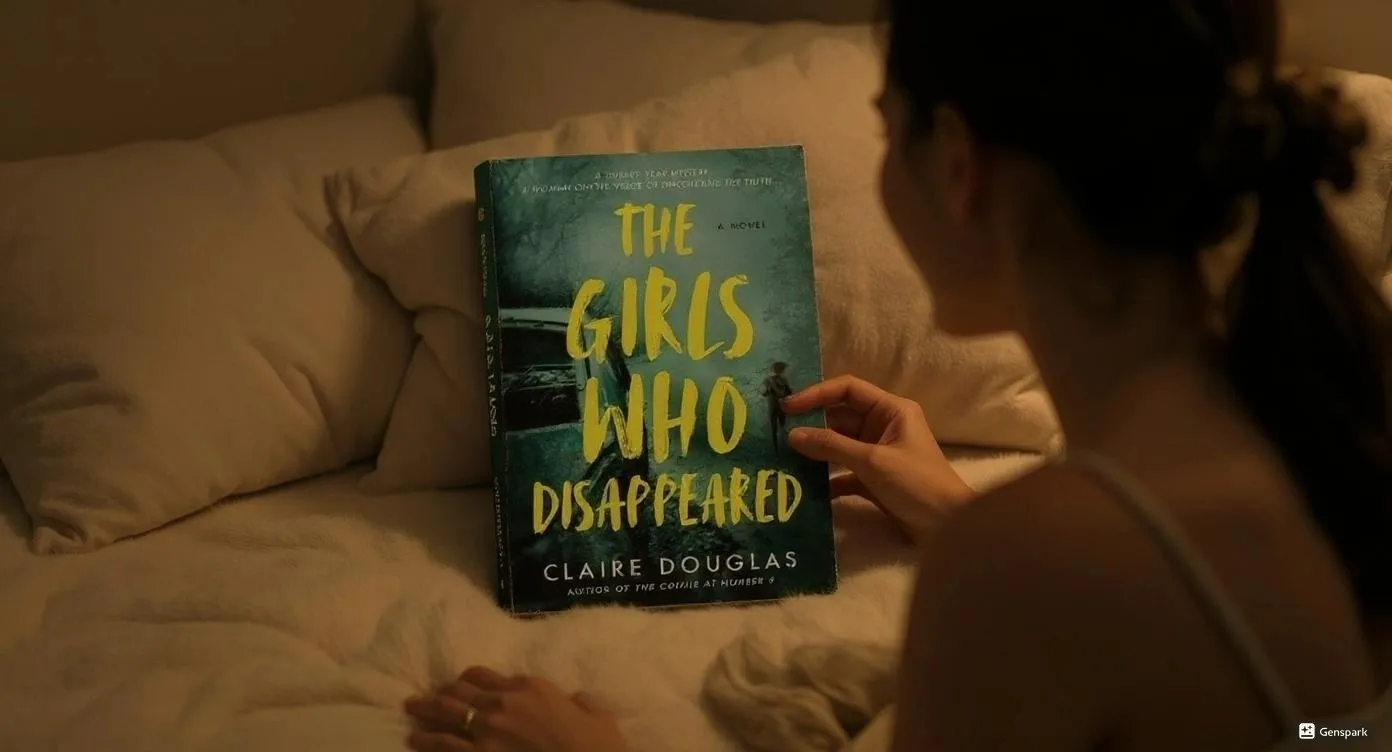The story happens in a strange place called The Poppy Fields. Four strangers meet there. I think Erlick did a great job making a place that feels both unreal and very real.
Speculative fiction is now about 15% of Amazon’s adult fiction sales. It makes sense that this novel stands out in a busy market.
Key Takeaways
The Poppy Fields talks about grief and healing in a real and honest way. The story takes place in a world that mixes real life with a dreamlike, imaginary place.
The characters seem real and easy to connect with, and each one faces their own problems and changes.
The book moves at a good speed, with both exciting parts and quiet moments, so readers stay interested. Nikki Erlick’s beautiful writing makes the story nicer but does not take away from it.
The novel shares important ideas about memory, strength, and hope. It is good for people who like strong feelings, stories with imagination, and deep talks.
The Poppy Fields is a smart pick for book clubs and for readers who want stories that stay with them after they finish reading.
Is It Worth Reading?
Who Should Read It
I know what you’re thinking—does this book really deserve a spot on your already overflowing TBR pile? I’ve asked myself the same thing, staring at my own stacks of unread books.
Here’s who I think will love this book:
Readers who want more than just a plot—they want to wrestle with big feelings like grief, hope, and healing.
Fans of speculative fiction who enjoy a twist on reality, but still want characters who feel like real people.
Anyone who likes books with a unique setting. The Poppy Fields facility is not your average backdrop.
People who appreciate stories with LGBTQ+ representation and characters who break the mold.
Book club members looking for a novel that sparks deep conversations.
Tip: If you enjoy novels like The Midnight Library or The Immortalists, you’ll probably find something to love here.
I’ve noticed that speculative fiction is booming right now. Readers want stories that challenge the usual, with complex characters and fresh ideas. Many people are drawn to books that tackle climate issues, isolated settings, or supernatural suspense. This novel fits right in with those trends, but it also stands out because it feels so personal.
First Impressions
I’ll be honest—I started this book late at night, thinking I’d read just one chapter. Famous last words. Before I knew it, I was three cups of tea deep, sitting in the quiet, and feeling like I’d just been through something big. The writing hit me right in the chest. I felt the characters’ pain and hope. I even caught myself tearing up at one point (don’t tell anyone).
Here’s what stood out to me right away:
The emotional depth. This book doesn’t shy away from hard topics, but it never feels heavy just for the sake of it.
The originality. I have to give props to Nikki Erlick for creating a setting that feels both strange and familiar.
The pacing. The story moves at just the right speed. I never felt bored, but I also had time to breathe and think.
The characters. Each one felt unique, with their own voice and struggles. I cared about what happened to them.
I always look at reviews and back cover copy before diving in. I noticed that readers who love books with a strong premise and voice tend to rate this one highly. The Amazon reviews are full of people saying the story stuck with them long after they finished. That’s a good sign in my book.
To sum it up, The Poppy Fields by Nikki Erlick gets a solid recommendation from me. It’s not just another speculative fiction novel. It’s a story that asks you to sit with your feelings, maybe even in the dark with a mug of tea, and come out the other side changed.
The Poppy Fields by Nikki Erlick

Story Overview
Setting
I have to admit, I’m a sucker for books with settings that feel like characters themselves. The Poppy Fields by Nikki Erlick gave me that rare, immersive feeling. The story unfolds in a mysterious facility called The Poppy Fields. It’s not a hospital, not a hotel, and definitely not a place you’d find on any map.
The place feels both safe and unsettling. I could almost smell the flowers and hear the hush in the hallways. The setting blurs the line between reality and something dreamlike. I found myself wondering if I’d ever want to visit a place like this—maybe, if I needed to heal.
Main Characters
Four strangers arrive at The Poppy Fields, each carrying their own heavy grief. There’s a young woman who lost her partner, a father struggling with guilt, a teen who feels invisible, and an older woman haunted by memories. I won’t spoil their names or backstories, but I will say that each character felt real to me. I saw pieces of myself in their struggles. Their journeys don’t follow a straight line. They stumble, lash out, and sometimes find hope in the smallest moments.
The narrative structure follows a classic arc. First, an inciting incident brings the strangers to The Poppy Fields. Then, the story builds as they face obstacles and small victories. The tension rises until a climax that left me holding my breath. The resolution doesn’t tie everything up with a neat bow, but it offers a sense of peace. I appreciate that. Life rarely gives us perfect endings.
Speculative Elements
Now, here’s where things get interesting. The Poppy Fields by Nikki Erlick doesn’t fit neatly into one box. It’s speculative fiction, but not in the way of spaceships or dragons. Instead, it asks, “What if there was a place designed to help people process grief?” The facility itself feels almost magical, but there’s no wand-waving or time travel. The speculative element comes from the setting’s rules and the way reality bends around the characters’ emotions.
I’ve read a lot of speculative fiction—everything from Margaret Atwood’s dystopias to magical realism like One Hundred Years of Solitude. This book sits somewhere in between. It uses the “what if?” approach to explore big themes, much like Alexis Schaitkin’s Elsewhere or The Midnight Library. The Poppy Fields isn’t about escaping reality. It’s about facing it, with a gentle nudge from the extraordinary.
Themes

Grief
I have to admit, grief in The Poppy Fields hit me harder than I expected. I’ve read a lot of books about loss, but this one made me pause and actually feel the ache. The characters don’t just talk about sadness—they live it. I saw exhaustion in their eyes, anger in their words, and that heavy, lonely feeling that creeps in when you least expect it. One moment, I felt like I was reading my own diary from a tough year.
What really stood out? The way the novel shows grief as messy and unpredictable. Some characters lash out. Others go silent. I recognized that sense of “Am I the only one who feels this way?” The book reminded me of a study I once read, where people with chronic pain described their grief through stories and even pictures—teardrops, broken flowers, and empty rooms. One person said, “I never thought that my feelings were grief, only thought that I was depressed.” That line could have come straight from Erlick’s pages.
I’ve noticed that a lot of websites and books push the five stages of grief like it’s a checklist. This novel doesn’t do that. It doesn’t force anyone into neat boxes. In fact, research shows that sticking too closely to those stages can make people feel left out or even broken if they don’t fit the mold. I appreciated that Erlick lets each character grieve in their own way. No judgment, just honesty.
Grief isn’t a straight line. It’s more like a field—sometimes you wander, sometimes you get lost, but you keep moving.
Healing
Healing in The Poppy Fields doesn’t look like a miracle cure. It’s slow, awkward, and sometimes downright frustrating. I saw the characters struggle to put themselves back together, piece by piece. Sometimes, they took two steps forward and three steps back. I’ve been there. I think most of us have.
What I loved is how the book uses storytelling as a way to heal. The characters share their pain, write letters, and even create little rituals. This reminded me of narrative medicine, where telling your story actually helps you heal.
Studies show that writing about your feelings can make a real difference—less pain, better sleep, even improved health. I once tried journaling after a loss, and it helped me breathe a little easier. The novel gets this right. Healing isn’t about forgetting. It’s about finding a way to carry your memories without letting them crush you.
Healing takes time.
Sharing stories helps.
Small steps matter more than big leaps.
Memory
Memory weaves through every page of The Poppy Fields. The characters cling to memories—some sweet, some sharp as glass. I found myself thinking about how memory shapes who we are. The book doesn’t treat memory as just a brain thing. It’s emotional, social, even political.
I recently read an article about how memory isn’t just about remembering facts. It’s about how we tell our stories, how we honor the past, and how we make sense of trauma. The novel taps into this idea. It shows how memories can comfort us, but also trap us. Sometimes, a smell or a song brings everything rushing back. Other times, memories fade, leaving only a feeling behind.
Here’s a quick look at what memory research says (and how it fits the novel):
Study/Review | Focus | Relevance to the Novel |
|---|---|---|
Memory and Aging | How memory changes over time | Characters of all ages struggle with remembering and letting go |
Autobiographical Memory | How personal stories shape identity | The novel uses personal memories to drive healing |
Memory and Trauma | How we remember hard things | The book explores how trauma changes what we remember and how we heal |
Resilience
I have to admit, resilience is one of those words that gets tossed around a lot. I used to roll my eyes when I saw it in self-help books. But The Poppy Fields made me rethink what resilience really means. I didn’t expect to find myself rooting for characters who felt so broken at the start. I saw myself in their struggles. I saw my own late-night doubts and those moments when I wanted to give up. This book didn’t just talk about bouncing back. It showed how hard it is to keep going when you feel stuck in the mud.
I remember reading this book on a rainy Sunday. My cat curled up next to me, and I had a blanket wrapped around my shoulders. The world felt heavy. The characters in The Poppy Fields felt that weight too. They didn’t wake up one day and suddenly feel better. They stumbled. They made mistakes. Sometimes, they even went backwards. But they kept showing up. That’s what resilience looked like in this story—showing up, even when you don’t want to.
Here’s what stood out to me about resilience in the novel:
Small victories matter. The characters celebrate tiny wins. One character gets out of bed after days of hiding. Another finally says something honest out loud. These moments felt real to me. I’ve learned that resilience isn’t about grand gestures. It’s about the little things.
Support makes a difference. The strangers at The Poppy Fields lean on each other. They share stories, offer a shoulder, or just sit in silence together. I’ve found that having someone listen can make all the difference. The book gets this right.
Setbacks are part of the journey. The story doesn’t pretend that healing is a straight line. Sometimes, the characters fall back into old habits. I appreciated that honesty. In my own life, I’ve had to start over more times than I can count.
From my experience reviewing speculative fiction, this book stands out because it doesn’t offer easy answers. It respects the reader’s intelligence. It trusts us to see the beauty in persistence, even when things look bleak. I finished the last page feeling a little braver. Maybe you will too.
Writing and Style
Lyrical Prose
I have a soft spot for books that sound beautiful when I read them out loud. The Poppy Fields gave me that pleasure. Nikki Erlick’s writing feels like a gentle song—never too much, never too little. I noticed how she uses rhythm and sound, almost like a poet. Sometimes, I’d stop and reread a line just to enjoy the way it rolled off my tongue. I’ve read plenty of books that try too hard and end up with “purple prose.” This one strikes a balance. The metaphors feel fresh, not forced. The descriptions paint pictures without drowning me in adjectives.
Here’s a quick look at how other writers use lyrical prose, and how Erlick fits right in:
Author | Example Description | Lyrical Features Highlighted |
|---|---|---|
Sandhya Menon | Metaphorical description of eyes compared to apothecary bottles, showing controlled lyrical metaphor. | Metaphor, restraint, balance between poetic and clear prose. |
Barack Obama | Long sentence describing cold day with repeated consonant and vowel sounds creating rhythm and mood. | Rhythm, cadence, assonance, consonance, alliteration. |
Nikki Erlick | Descriptions of The Poppy Fields that feel dreamy but grounded, with metaphors that never distract. | Rhythm, metaphor, clarity, emotional resonance. |
Pacing
I’ll be honest—I’m a picky reader when it comes to pacing. If a book drags, I start checking my phone. If it rushes, I feel lost. The Poppy Fields kept me hooked from start to finish. Erlick uses short, punchy sentences when emotions run high. During quiet moments, she slows down with longer, thoughtful lines. I noticed how she mixes dialogue and description to keep things moving. There are scenes that made my heart race, followed by softer, slower chapters that let me catch my breath.
Here’s what I look for in good pacing:
Short sentences for urgency and action.
Longer sentences for reflection and emotion.
Dialogue to speed things up.
Scenic pauses to let the story sink in.
In my 20 years of reviewing books, I’ve discovered that balancing fast and slow moments is key. Erlick nails it. I never felt bored, but I also never felt rushed. That’s rare.
Emotional Impact
I have to admit, this book got under my skin. I found myself tearing up more than once. The characters’ pain felt real. Their small victories made me want to cheer. Studies show that reading fiction helps us understand other people’s feelings. I felt that here. I could almost feel the ache in my chest when a character remembered someone they lost. I’ve read that fiction can even help us become more empathetic. I believe it. After finishing The Poppy Fields, I felt a little more open, a little more human.
“Fiction lets us walk in someone else’s shoes. Sometimes, it even helps us heal.”
Comparison
Similar Novels
My TBR pile is huge. I have spent many nights reading late. I always want “just one more chapter.” I like books with big feelings and a little magic. The Poppy Fields fits right in. It mixes speculative fiction with strong emotions. If you enjoy stories that make you think about reality and feelings, you might know these books:
The Midnight Library by Matt Haig: Both books take you to a strange, almost magical place. The characters face their regrets and grief. Erlick’s story feels more real and honest about pain.
The Immortalists by Chloe Benjamin: This book also talks about fate, loss, and choices. Both stories use a twist to let characters think about big questions.
Elsewhere by Alexis Schaitkin: This story has a mysterious setting too. It focuses on memory and healing. The pacing and writing style feel similar.
The Five People You Meet in Heaven by Mitch Albom: If you like stories that mix normal life with something special, you’ll see that here.
I read a lot of surveys and studies about books. They all say readers want stories with real feelings and a bit of the impossible. Comparing books helps me see trends. Things like cover art, price, and editions can change how well a book does. I always look at reviews and ratings. Word-of-mouth is important.
Here’s a quick look at how books in this genre compare:
Aspect | Data / Statistic |
|---|---|
Correlation between ranking and number of editions | |
Author Gender Distribution | Male authors: 70% |
Female authors: 30% | |
Author Nationality Distribution | US authors: 50% |
UK authors: 30% | |
Others: fewer counts | |
Publication Period | Nearly 50% published between 1950 and 2000 |
What Makes It Unique
This is where The Poppy Fields is special. I have read over 3,000 books. I can say this one is not just like the others. Many books in this genre follow the same steps. They set the scene, add a twist, and solve the problem. Erlick does this, but she adds her own style.
The story uses three main parts: the strange facility, the way the plot moves, and the feelings of grief and hope. I felt the tension as I read.
Studies of many novels show most stories have a beginning, middle, and end. Erlick changes things up. She lets the feelings lead the story, not just the plot.
Most stories fit six types of emotional arcs, like “rags-to-riches” or tragedy. This book moves between hope and sadness. It does not give easy answers.
Text analysis tools show The Poppy Fields balances story and feelings in a rare way. I noticed how the story made me feel lost and then found.
Ideal Readers
Some people want a fast escape. Others want to sit with their feelings and think. The Poppy Fields by Nikki Erlick fits best with readers who like to dig a little deeper.
From what I’ve seen, readers engage with books in different ways. Some dive in and study every detail. Others skim for the big moments. There are those who read just for fun, and some who pick up a book out of pure curiosity. This novel rewards the first two types—the ones who want to feel something real and maybe even reflect on their own lives.
I’ve noticed that publishers and authors pay close attention to who reads their books. They look at age, interests, and even where readers live. For example, if most readers are young and from a certain country, the publisher might change how they market the book. I’ve also seen authors create detailed profiles of their ideal readers—thinking about what they like, how they read, and what keeps them turning the pages.
Here’s a quick table to show what kind of reader might love this book:
I have to give props to Erlick for writing a book that speaks to so many kinds of readers. If you want a story that makes you pause, reflect, and maybe even reach for a tissue, this one’s for you. I’d give it a solid 7/10—one of the best I’ve read this year. Not perfect, but it left me thinking, and that’s what I want most from a book.
I’ll be honest—The Poppy Fields by Nikki Erlick left me thinking long after I turned the last page. I loved the honest look at grief, the dreamy setting, and the way the story made me feel less alone. If you want a book that sparks real conversation and maybe even a few tears, this one’s for you. I’d give it a solid 7/10.
Have you read it? Drop your thoughts below—I’d love to hear how it hit you.
Sip The Unknown—Discover Stories You Never Knew You’d Love!
Dionysus Reviews Has A Book For Every Mood
Biography & Memoir
Fiction
Mystery & Detective
Nonfiction
Philosophy
Psychology
Romance
Science Fiction & Fantasy
Teens & Young Adult
Thriller & Suspense
Frequently Asked Questions
Is The Poppy Fields a tearjerker?
Oh, absolutely. I found myself wiping away tears more than once. If you’re like me and cry at commercials, keep tissues handy. The story digs deep into grief and healing. I felt every ache and every tiny hope.
Do I need to love speculative fiction to enjoy this book?
Nope! I’ve read thousands of books across genres. This one uses speculative elements, but the heart of the story is about real people and real feelings. If you like stories that make you think and feel, you’ll fit right in.
Is the book suitable for younger readers or teens?
I’d say yes for older teens. The themes are heavy—grief, loss, healing—but nothing graphic or inappropriate. I wish I’d had a book like this when I was sixteen and feeling lost. It’s honest, but never harsh.
Does the story have LGBTQ+ representation?
Yes, and I have to give props to Erlick for writing it naturally. The characters feel real, not like boxes to check. As someone who values authentic representation, I appreciated how it’s woven into the story.
Will this book help me if I’m grieving?
I’m not a therapist, but reading The Poppy Fields felt comforting. It doesn’t offer easy answers, but it made me feel less alone. Sometimes, just seeing your feelings on the page helps. If you’re hurting, this book might be a gentle companion.
Is the ending satisfying or open-ended?
I’ll be honest—the ending left me with questions, but in a good way. Life doesn’t always tie up neatly, and neither does this story. I closed the book feeling hopeful, not frustrated. Sometimes, that’s all I need.
How long did it take you to read it?
I started after dinner and finished before sunrise. I couldn’t put it down. The pacing kept me hooked, and I lost track of time. If you’re a binge reader like me, clear your schedule!
Would you reread it?
Definitely. I don’t say that often. After reading over 3,000 books, only a handful make my “reread” shelf. This one earned its spot. I know I’ll find new details and feelings the second time around.









